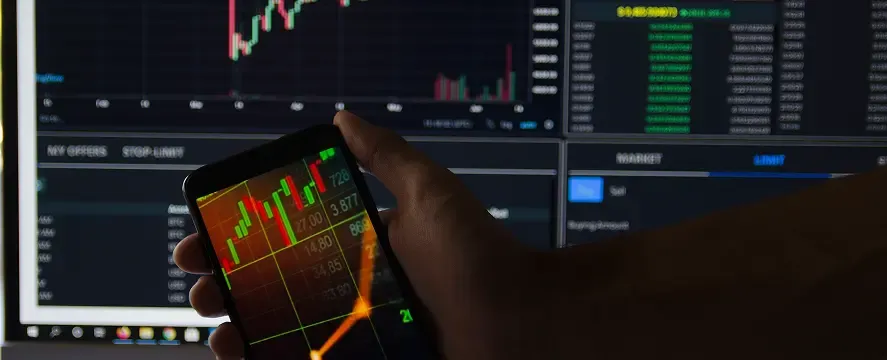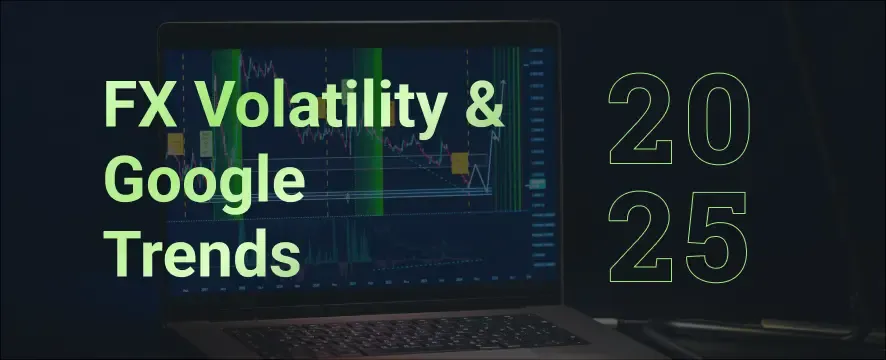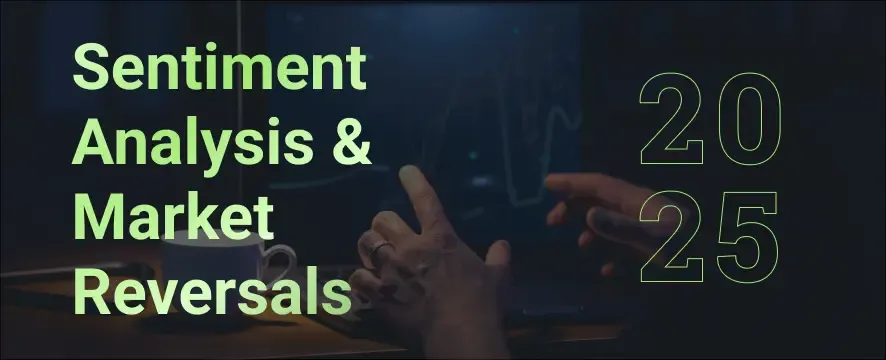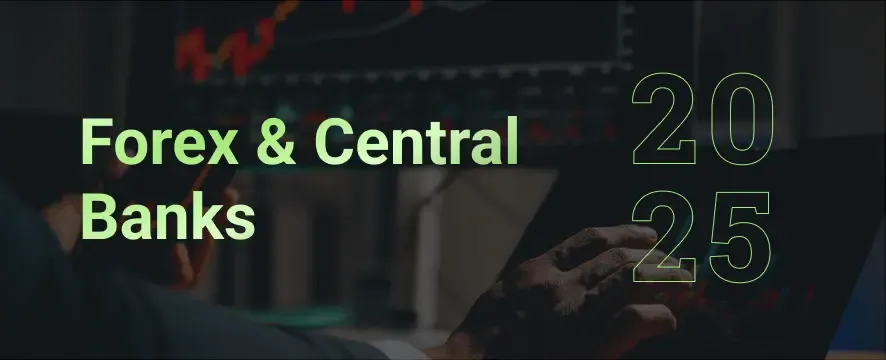11 min read
Share
Do moon cycles actually have an impact on currency movements, or is it just a fairy tale myth?

The moon hovers high above us, controlling ocean tides and inspiring centuries of folklore, including discussions about money. But could this celestial body also influence something as seemingly disconnected as currency markets?
An increasing number of traders are examining the relationship between lunar phases and forex movements – not just for mystical speculation, but with data-driven approaches to understand investor sentiment.
For most traditional analysts, the mere suggestion of lunar cycles affecting market behavior might trigger immediate skepticism. Yet numerous studies have uncovered curious correlations that deserve closer examination.
The Lunar Effect: More Than Just Folklore
Financial markets operate on human decisions and emotions. Decisions flow from psychology. And psychology, whether we acknowledge it or not, responds to environmental factors – including, potentially, lunar cycles.
Research has shown that stock returns are significantly lower during full moon periods compared to new moon periods, with studies documenting this pattern across numerous international markets.
But does this actually translate to the forex market?
Some forex traders have begun tracking lunar cycles after observing potential correlations with market volatility. However, the difference between stock and forex markets creates an interesting dynamic. Currency pairs differ from stocks. They don’t have inherent optimism or pessimism. Instead, they reflect the relative strength of two economies.
This means lunar effects might manifest differently in forex, perhaps through volatility rather than directional bias.
The Science Behind Market Sentiment
The potential connection between lunar phases and market behavior isn't entirely far-fetched from a scientific perspective. The moon's gravitational pull affects Earth's waters, and human bodies contain approximately 60% water. Some researchers suggest that if lunar forces can move oceans, they might subtly influence human physiology and psychology.
Studies examining investor behavior have found that psychological factors significantly impact trading decisions. Some research suggests that individual investors trade more aggressively on days considered ‘auspicious’ according to certain calendars, driven by emotional responses.
This raises the question: could lunar phases similarly affect trader psychology on a subconscious level?
For centuries, the full moon has been associated with heightened emotions and unusual behavior (hence the term ‘lunacy’ from the Latin ‘luna’ for moon). If traders collectively experience subtle psychological effects during specific lunar phases, this could theoretically translate to market movements.
Trading Strategies Based on Lunar Cycles
Some traders have developed specific approaches incorporating lunar data. One popular method involves the ‘lunar buy-sell strategy,’ which recommends buying on the new moon and selling on the next full moon, typically 14 to 16 days later.
Of course, forex traders would need to adapt such strategies to the unique characteristics of currency markets.
For practical implementation, traders could follow these steps:
- Track lunar calendar dates for full and new moons
- Analyze historical forex volatility during different lunar phases
- Identify which currency pairs show the strongest correlations
- Combine lunar timing with technical analysis for entry/exit points
Implement proper risk management regardless of lunar influence
However, while some traders report success with these methods, many experts remain skeptical, emphasizing that there's limited consistent scientific evidence supporting the influence of lunar cycles on financial markets, and potential losses should be considered. Still, in trading, even slight edges can prove valuable when properly integrated into a comprehensive strategy and paired with other forms of analysis, such as technical, fundamental, and sentiment analysis.
Technical Analysis and the Lunar Connection
Traders incorporating lunar cycles typically don't rely on them exclusively. Instead, they integrate lunar data with established technical analysis methods. For example:
- Using moving averages to identify trends, then lunar phases to optimize entry timing
- Combining lunar cycle analysis with support/resistance levels
- Looking for pattern convergence between technical indicators and lunar phases
- Tracking volatility changes around full and new moons for specific currency pairs
This holistic approach acknowledges that while lunar cycles might influence market psychology, they represent just one variable among many affecting price movements.
Examining the Evidence: Currency Pairs and Lunar Patterns
Which currency pairs might show the strongest lunar correlations? Some traders report that exotic pairs with lower liquidity might demonstrate more pronounced lunar effects, potentially because they're more susceptible to sentiment shifts. Major pairs like EUR/USD or USD/JPY, with their massive trading volumes, may show more subtle lunar correlations.
Trading volume analysis across lunar phases has yielded mixed results. Some studies find correlations between lunar cycles and trading activity, while others report no significant relationship. This inconsistency highlights the challenge of isolating lunar effects from countless other market variables.
Momentum traders sometimes report that market trends accelerate during certain lunar phases. This could potentially be leveraged by swing traders looking to capture larger price movements over periods aligning with the lunar calendar.
Fundamental Analysis vs. Lunar Cycles
Traditional fundamental analysis examines economic indicators, central bank policies, and geopolitical developments. At first glance, these factors seem completely disconnected from lunar considerations. However, some traders suggest an interesting relationship.
Perhaps lunar cycles don't override fundamentals but instead influence how market participants interpret and react to them. For example, if traders collectively experience more pessimistic sentiment during full moons, they might react more strongly to negative economic data released during that period.
Economic calendars remain essential tools, regardless of lunar considerations. Major announcements like interest rate decisions or employment reports will always drive significant market movements, and even lunar cycle traders should pay close attention to these developments.
Financial Astrology: Beyond Simple Lunar Effects
Some traders venture beyond basic lunar phase tracking into broader financial astrology. This approach examines how various celestial bodies and their movements might correlate with market behavior. Proponents suggest that lunar cycles provide just one entry point into a more comprehensive astrological analysis of market patterns.
Beyond the basic full/new moon distinction, some analysts track additional lunar factors like apogee (farthest point from Earth) and perigee (closest point), suggesting these positions occasionally coincide with market reversals. The moon's declination (position relative to the celestial equator) represents another variable some traders monitor.
While mainstream financial analysis rejects many of these approaches, proponents of financial astrology argue that anything influencing collective human psychology deserves consideration when analyzing markets driven by human decision-making.
Historical Data and Backtesting Lunar Strategies
Quantitative traders have conducted various backtests on lunar strategies with mixed results. The challenge lies in separating actual lunar effects from random correlation or data mining. Currency pairs have existed for a relatively short period compared to stock markets, providing less historical data for lunar cycle analysis.
Interestingly, research examining stock markets found double the returns during new moon periods compared to full moon periods over significant timeframes, yet found no reliable evidence of lunar cycle effects on trading volume or volatility. This suggests the lunar effect, if real, might operate through subtle psychological influences rather than through dramatic trading behavior changes.
Market Psychology and Human Behavior
Market movements ultimately stem from human decisions, which flow from human psychology. Behavioral finance research has demonstrated significant effects of investor mood on asset returns, with factors like weather and other geophysical phenomena influencing pricing.
If lunar phases affect human mood, then, by extension, they might affect investor behavior and thus asset prices. The psychological studies that associate full moon phases with depressed mood suggest stocks may be valued less during these periods, potentially resulting in lower returns.
For forex traders, this psychological dimension adds a layer of complexity. Currency pair movements reflect the relative sentiment between two economies, not just absolute positive or negative feelings about a single asset. This might explain why lunar effects may manifest differently in forex compared to equity markets.
Risk Management: The One Constant Regardless of the Moon
Regardless of whether lunar cycles truly influence markets, sound risk management remains non-negotiable. Even the strongest lunar cycle advocates acknowledge the need for:
- Appropriate position sizing
- Clear stop loss orders
- Defined risk per trade
- Diversified strategies
- Realistic profit expectations
No lunar correlation, however strong, justifies abandoning these fundamental principles. Protecting capital must remain the priority through all phases of the moon.
Traders experimenting with lunar strategies should allocate only a portion of their portfolio to this approach, treating it as one potential edge rather than a comprehensive system.
Integrating Lunar Cycles Into a Complete Trading Strategy
For traders interested in exploring lunar effects, integration into a broader strategy makes more sense than exclusive reliance. A balanced approach might include:
- Primary analysis using technical and fundamental methods
- Risk management parameters defined independently of lunar considerations
- Lunar cycle data as a supplementary form of analysis
- Continuous tracking of performance to determine effectiveness
- Regular strategy adjustments based on results, not preconceptions
This approach treats lunar cycles as one potential input among many, avoiding over-reliance while leaving room for potential benefits.
The Skeptic's Perspective: Coincidence or Causation?
Critics raise valid points about lunar trading strategies. Many experts consider lunar cycle trading a form of superstition without scientific backing. They argue that any apparent correlations likely result from coincidence rather than causation, noting that with enough data mining, patterns can be found in random noise.
The existence of conflicting studies highlights the need for cautious interpretation. While some research supports lunar correlations, other equally rigorous analyses find no significant relationship. This inconsistency should give traders pause before committing substantial capital to lunar strategies.
Algorithmic Trading and Lunar Cycles
In today's markets, algorithms dominate trading volume. This raises interesting questions about lunar effects. If human psychology responds to lunar cycles, but algorithms increasingly drive market movements, will lunar correlations diminish over time?
Conversely, some algorithmic systems incorporate sentiment analysis and might indirectly capture lunar effects through sentiment indicators. Moreover, sophisticated machine learning algorithms might even identify lunar correlations without being explicitly programmed to look for them.
For retail forex traders, understanding this algorithmic landscape becomes crucial when evaluating potential lunar effects.
Practical Application for Today's Trader
If you're considering incorporating lunar cycle analysis into your forex trading, consider these practical steps:
- Maintain healthy skepticism while remaining open to potential edges
- Document your observations across multiple currency pairs
- Look for specific volatility or directional patterns around lunar phases
- Compare results across different market conditions
- Use lunar data as a supplement to, not a replacement for, technical and fundamental analysis
- Track performance with and without lunar filtering to measure the actual impact
This measured approach allows exploration without over-commitment to unproven theories.
The Cultural Dimension of Lunar Trading
Different cultures place varying emphasis on lunar cycles in their business practice. Research has found that in regions where traditional lunar calendars remain culturally significant, market effects corresponding to lunar phases appear stronger. For example, studies examining the Taiwanese markets found more pronounced lunar calendar effects than in Western markets.
This cultural element suggests that trader psychology remains influenced by collective beliefs and traditions. In a global forex market where currencies represent diverse economies and cultures, these variations add another layer of complexity to lunar cycle analysis.
Looking Forward: The Future of Sentiment Analysis in Forex
Whether or not lunar cycles specifically influence markets, broader sentiment analysis continues gaining traction in forex trading. Advanced tools now quantify market sentiment through social media analysis, positioning data, and other metrics beyond traditional indicators.
These developments suggest a growing recognition that markets respond to psychological factors alongside economic fundamentals. In this context, the discussion around lunar cycles represents just one aspect of a larger shift toward incorporating sentiment analysis into trading decisions.
The future likely belongs to traders who can synthesize multiple approaches –technical, fundamental, and sentiment-based – into coherent strategies that adapt to evolving market conditions.
Finding Your Path Through Moon Phases and Market Movements
The question isn't whether lunar cycles definitively control forex markets – they clearly don't in an absolute sense. Rather, it's whether they might offer subtle edges worth incorporating into a comprehensive trading approach.
It’s important for each trader to evaluate the evidence and decide whether lunar analysis deserves a place in their strategy. Some will dismiss it entirely as pseudoscience. Others will embrace it enthusiastically, perhaps over-attributing its influence. The most successful approach likely lies somewhere between—acknowledging potential lunar effects while maintaining analytical rigor and risk management discipline.
In the end, successful trading stems from probability management more than certainty. If lunar cycles potentially tilt those probabilities even slightly in your favor, they might merit consideration alongside other analytical tools in your forex trading arsenal as part of a good strategy.
Join our community
Get an insight from other users about SeacrestFunded and their experiences. 131K+ members and counting





